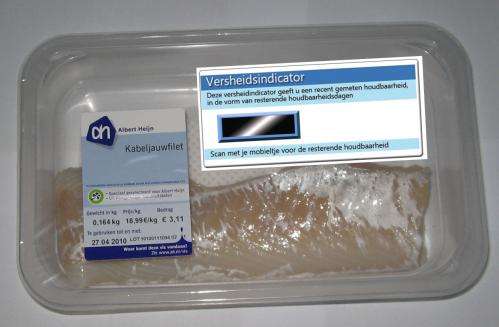Fish packaging with built-in nose

From the outside you can't see whether supermarket fish is still fresh. Once you remove the plastic foil it's immediately obvious how fresh it is, but by then it has already reached your kitchen. PhD candidate Jenneke Heising is working on packaging with a built-in nose that tells your smartphone how fresh the fish is, before you buy it.
Fish is a complicated product for supermarkets. Few foodstuffs are as variable as fish. Even the catch from a single fishing boat can contain fish with very different shelf lives. Water temperature, the sex of the fish and the type of food a fish has recently eaten can all influence the speed at which the meat decays.
Three ways of measuring freshness
Jenneke Heising's research into three ways of measuring the freshness of packaged fish has been published in the Journal of Food Engineering. The three methods have one thing in common: they all involve measurements using a sensor in the packaging. As the fish decays, various substances are released into the air inside the packaging and they subsequently dissolve in water in the sensor. Heising has investigated the practicality of using sensors that measure acidity, conductivity or ammonia. The ammonia sensor does not appear to be very useful because the substance is only released once the fish is almost 'off'. Acidity is unreliable because temperature appears to have too much influence on the readings. However, conductivity looks promising, Heising says.
Conductivity says something about freshness
Various substances released from the fish cause water to conduct electricity more easily. At differing temperatures, Heising investigated whether the sensor readings represented how fresh the fish was. "We can see an effect very rapidly, and that is just what we need. It seems we've found a good method. To confirm that, we'd also like to know in more detail which substances cause that effect. That's what we're investigating at the moment.'
Chip in packaging together with fish
Ultimately this research should lead to a tiny chip being packed in with fish. The chip will indicate how long the product remains fresh. "I'm thinking of a small piece of gel containing a chip that can be read with RFID." This will enable supermarkets and other retailers to judge the freshness of the fish without opening the packaging. "And consumers should also be able to read the chip information with their smartphones." No more nasty surprises when you get home.
Provided by Wageningen University




















